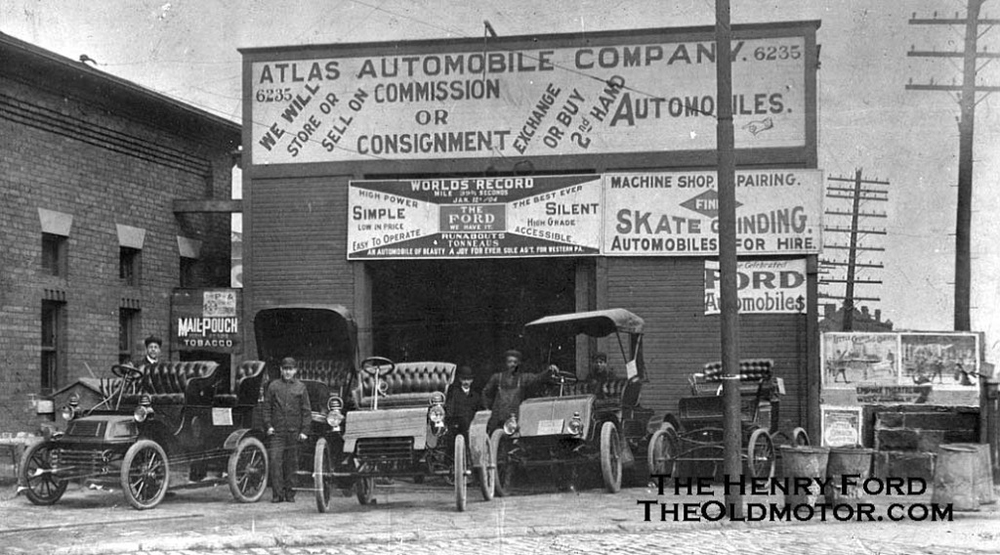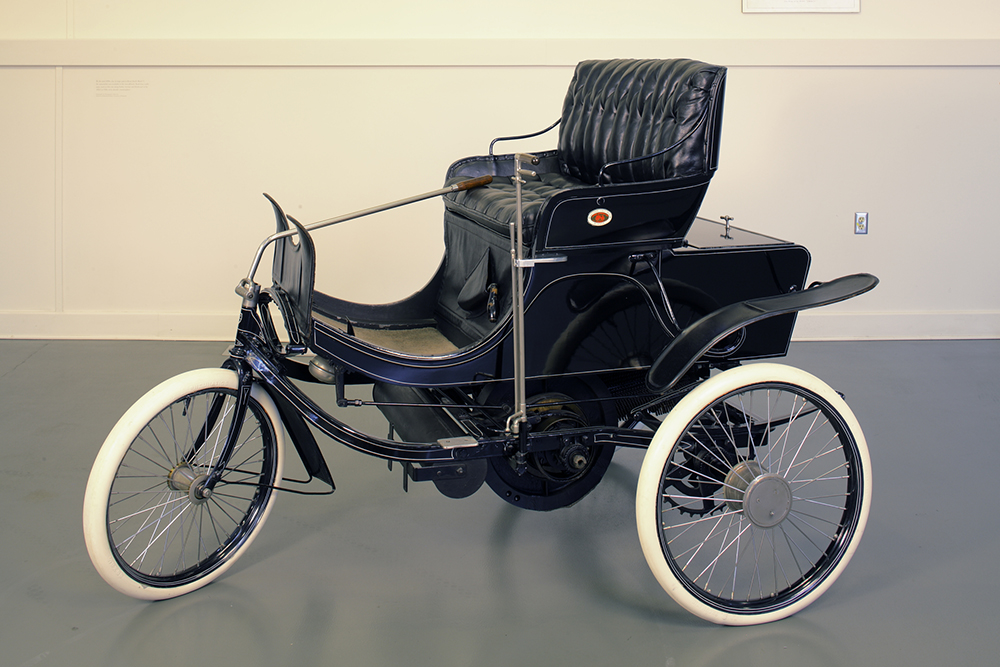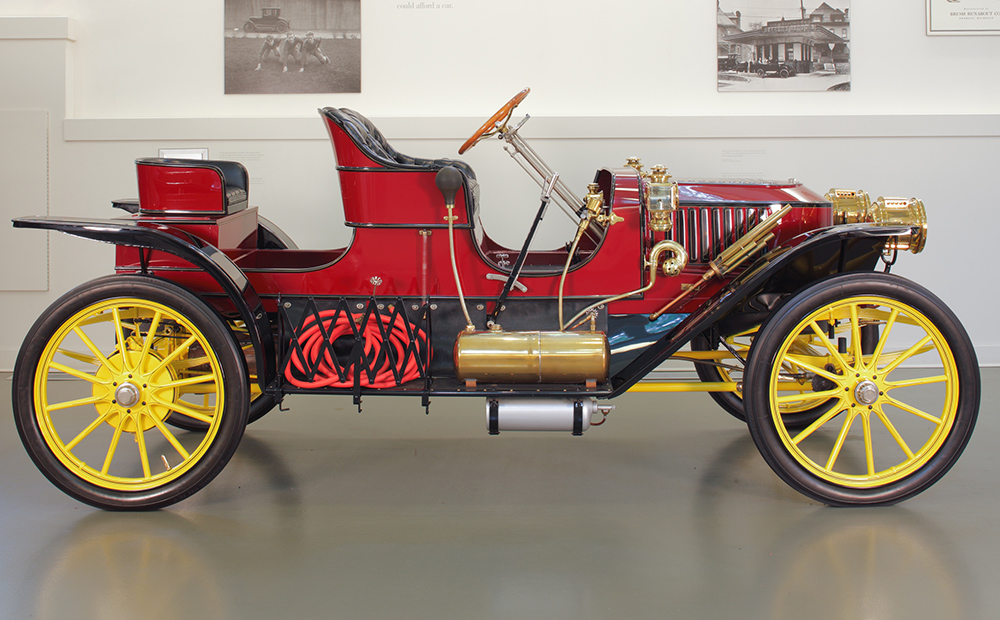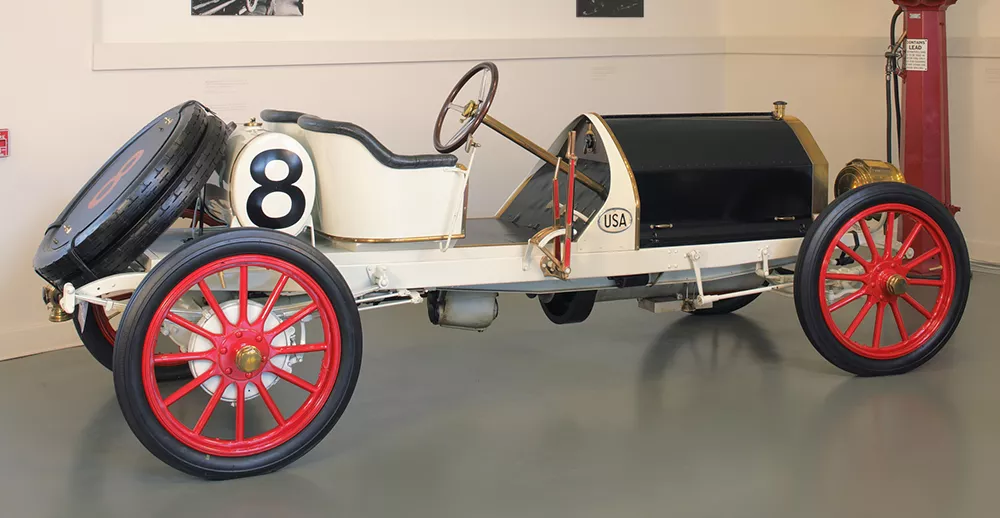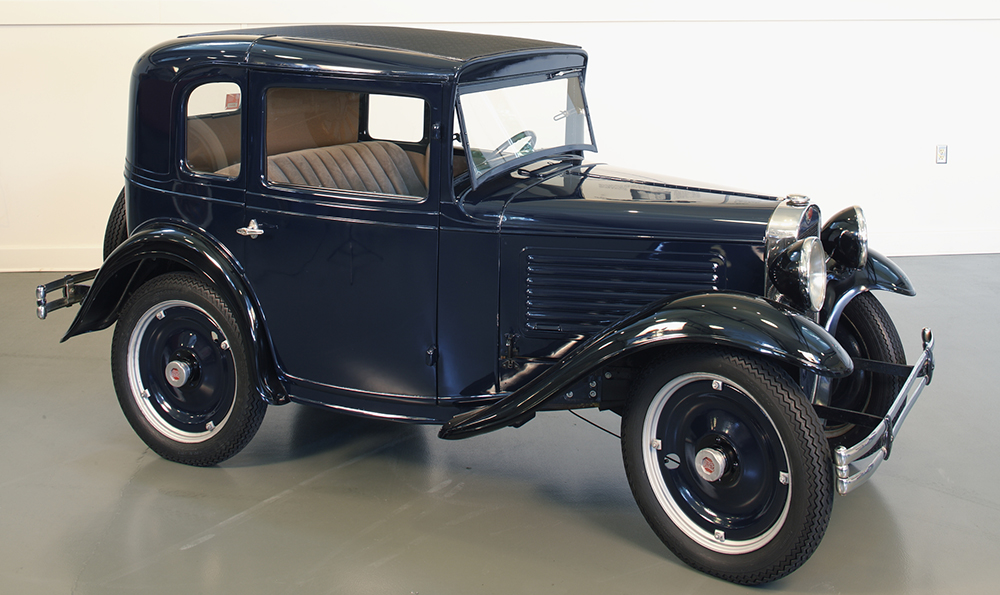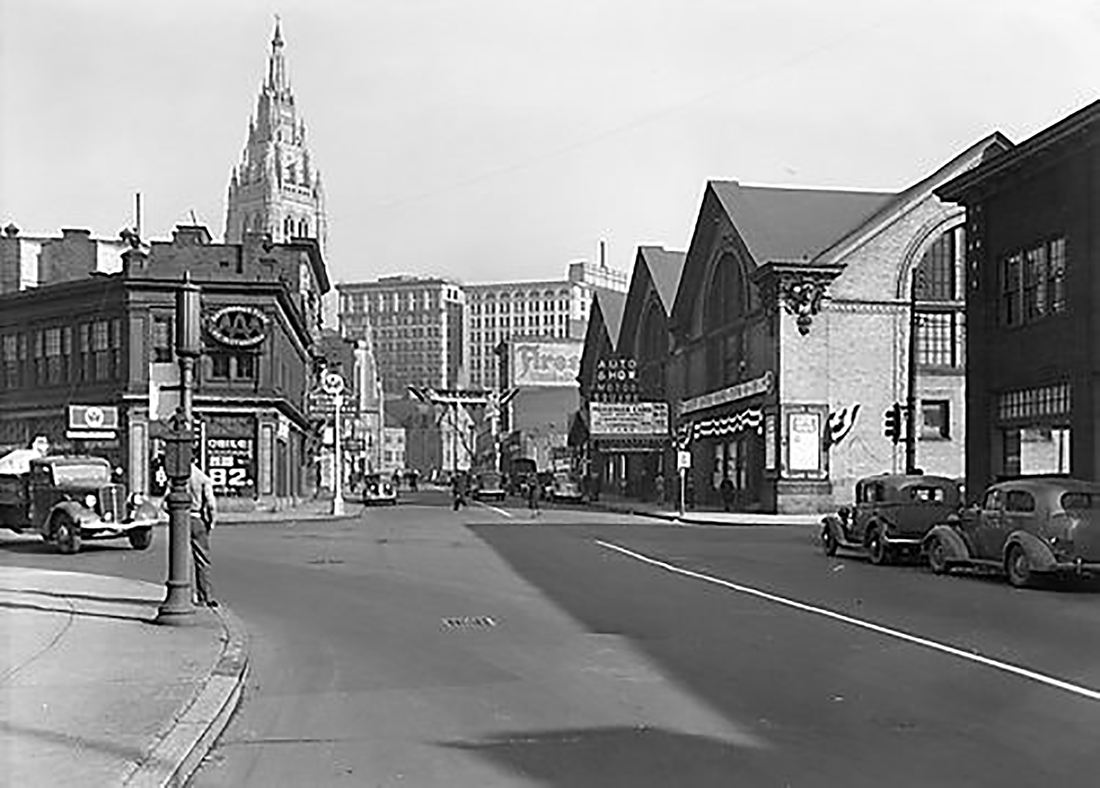
Image: A view of Baum Boulevard at South Beatty Street with a view of Motor Square Garden, Pittsburgh Auto Club, and the East Liberty Presbyterian Church steeple. Image courtesy Pittsburgh City Photographer Collection, University of Pittsburgh.
By Kim Cady | Assistant Curator Car and Carriage Museum, The Frick Pittsburgh
 Pittsburgh and the Automobile Industry in the Early 20th Century
Pittsburgh and the Automobile Industry in the Early 20th Century
When asked about the American automobile industry most people think of Detroit and the Big 3—Chrysler, Ford, and General Motors—but at the turn of the 20th century hundreds of automobile manufacturers could be found throughout the Northeast, in cities like Cleveland, Toledo, and Buffalo which benefited from their location along the shipping lines of the Great Lakes. Pittsburgh also found success in the emerging auto industry with its proximity to the shipping lines along the Ohio River as well as its abundance of manufacturing resources—steel, glass, aluminum, and skilled labor.
A car dealership and repair shop located on Penn Avenue 1903-1906—the Atlas Motor Car Company later turned manufacturer with a three-story fireproof facility on Ellsworth and College Avenues from 1906-1907. From the Collections of the Henry Ford. Gift of Ford Motor Company.
Automobile manufacturing prior to World War I developed from two sources, existent manufacturing—carriages, bicycles, railroads, and boats—and novice machinists, tinkerers, and inventors who were mechanically inclined. Those in the manufacturing field already had the set-up, and often the capital, to venture out into the booming auto industry. Carriage builders like the Studebaker Brothers in South Bend, Indiana, and bicycle manufactures Société Anonyme des Automobiles et Cycles Peugeot—in France—saw an opportunity to retool their works to manufacture automobiles, a relatively smooth transition. While still other car manufacturers came from various industrial sectors. The Stanley brothers of Maine created the Stanley Motor Carriage Company to develop a car propelled by steam. Prior to the steam car, the innovative brothers were known for inventing a dry-plate photographic process. This innovative spirit could also be found in Pittsburgh and Western Pennsylvania.
The running gear of this vehicle reflects bicycle technology, while the body is typical of carriage construction. The driver steered this tricycle-style vehicle using a tiller. Knox Automobile Company, Springfield, Massachusetts Model A Runabout, 1901. Frick Art & Historical Center, 1999.1.2. Gift of the estate of G. Whitney Snyder.
Stanley Motor Carriage Company, Newton, Massachusetts. Stanley Steamer Model R Roadster, 1909. Frick Art & Historical Center, 1999.1.1. Gift of Laurie Graham in memory of George McKay Schieffelin.
By the mid-1800s, Pittsburgh was ranked the 17th largest city in the US and was home to nearly 1,000 factories making it a force in industry, especially in the area of steel production. By 1900, Carnegie Steel was the largest steel company in America with three million tons of capacity. The increase in manufacturing jobs in Pittsburgh created a population explosion. According to Pittsburgh Quarterly, from 1870 to 1910 the city’s population grew from 86,000 to over 530,000. The surrounding region’s population grew at a rate twice as large as that of the entire country. This growth provided Pittsburgh with a huge labor force able work in the booming iron and steel factories as well as the growing automobile industry.
Since early automobiles were expensive to purchase early demand came from wealthy clientele—men from Pittsburgh, like Carnegie, Heinz, Frick, and Mellon. As the demand intensified a robust and independent auto industry grew steadily in Pittsburgh and Western Pennsylvania. As early as 1896, Empire Motor Company became one of the first automobile manufacturers in Pittsburgh, specializing in 2-cylinder engines. The following year the Pittsburgh Motor Vehicle Company (later renamed Autocar) produced various three- and four-wheeled vehicles. It wasn’t just new innovators making a go of it in the auto industry, bicycle and carriage manufactures threw their hat in the ring as well. Although carriages would share the road with cars until the 1920s, the carriage industry knew early on that its days were numbered. Carriage part suppliers—body builders, wheelwrights, painters, and lamp makers—were able to transition their skills into the up-and-coming auto industry. L. Glesenkamp & Sons, a prominent Pittsburgh carriage builder who retooled their shop to create car bodies and offered painting and varnish services produced their first motor wagon in 1909.
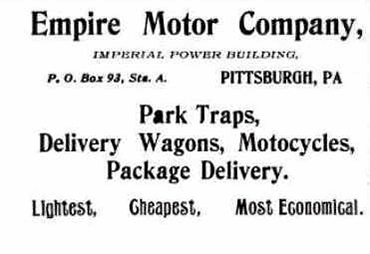
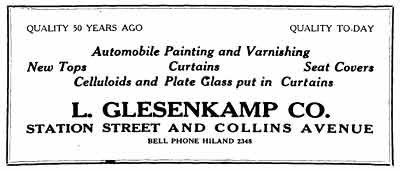
Empire Motor Company advertisement from 1896. Image courtesy Early American Automobiles. Advertisement for the services offered by L. Glesenkamp Co. Image courtesy Coachbuilt.
Auto manufacturers could be found throughout the city but many opened shops in the East End. Baum Boulevard, later nicknamed Automobile Row, offered service stations, dealerships, part suppliers, and the Motor Garden—now the AAA building—which held annual car shows featuring the latest models. The Penn Motor Car Company established their production on Thomas Boulevard in 1910 and advertised their 30 horsepower Penn 30 Touring Car as “the best at any price,” which in this case was just over $1,000. In 1912, the company built a $90,000 factory in New Castle, Pennsylvania, but when investors pulled out, no cars were ever produced there. While this marked the end of the line for Penn, their former sales manager Elmore Gregg stayed in the Pittsburgh car business, introducing the Pennsy a few years later.
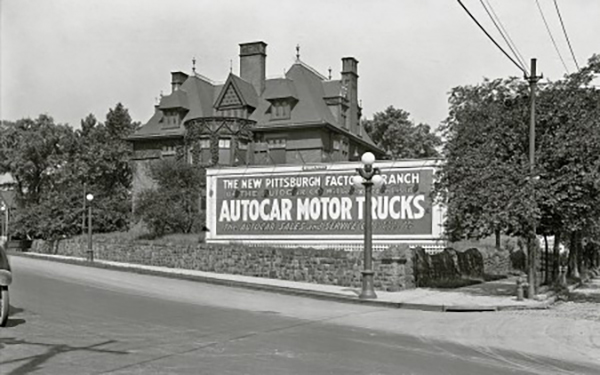
The Guffey estate, seen here in 1920, would make way a few years later for a new Autocar (formerly the Pittsburgh Motor Vehicle Company) branch. This corner of Baum Boulevard, at Liberty Avenue, was in the middle of the city’s burgeoning Automobile Row. Image courtesy Pittsburgh City Photographer Collection, University of Pittsburgh.
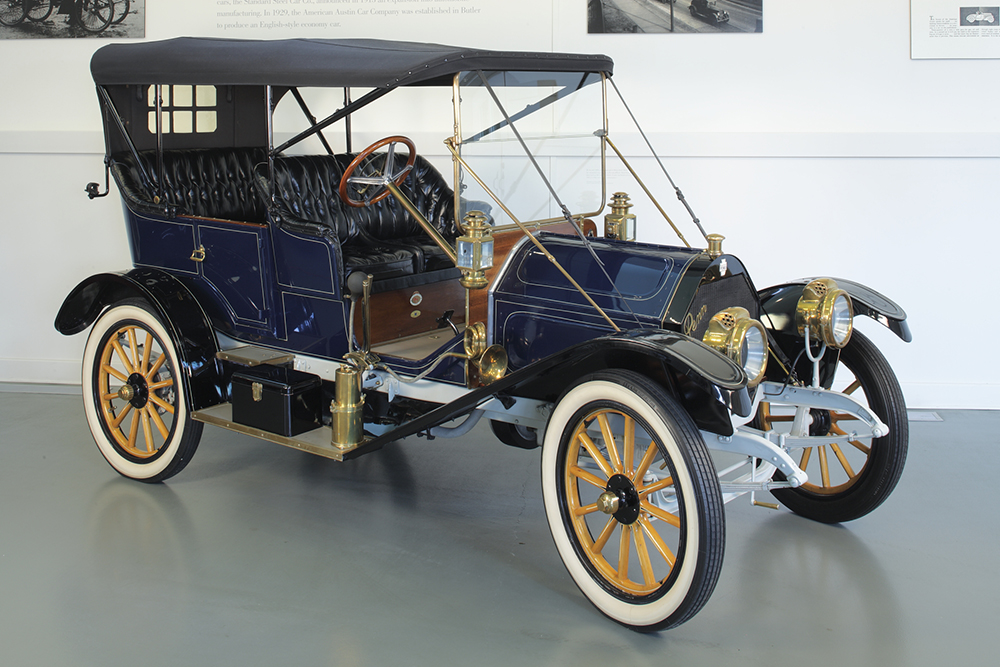
Penn Motor Car Company, Pittsburgh, Pennsylvania. Penn 30 Touring Car, 1911. Frick Art & Historical Center, 1999.1.7. Gift of the estate of G. Whitney Snyder.
Venturing out of the city manufacturers built factories in Washington (Universal, Croxton), Connellsville (Paragon), Meyersdale (Gurley) and a number of other communities. Fort Pitt Motor Manufacturing Company organized by German immigrant B.G. von Rottweiler built the 60 horsepower racecar known as the Pittsburgh Six at their factory in New Kensington from 1907-1911. The Munch-Allen Motor Car Company moved their factory from Yonkers, New York to DuBois, Pennsylvania—about 100 miles from Pittsburgh—in 1909 creating only one model, the Keystone Six-Sixty, but the company folded in 1910.
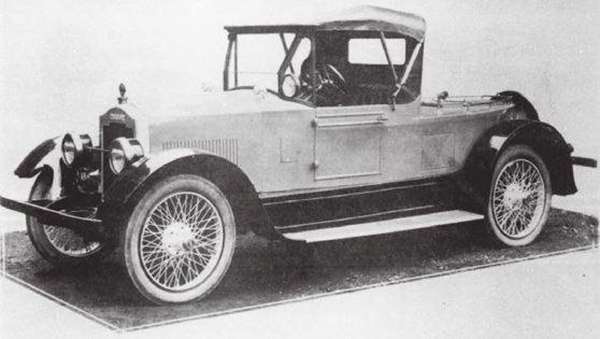
Paragon Motor Company Roadster, Connellsville PA, c. 1921. Image courtesy All Car Index .
Munch-Allen Motor Car Company, DuBois, Pennsylvania. Keystone Six-Sixty Roadster, 1909. Frick Art & Historical Center, 1999.1.3. Gift of the estate of G. Whitney Snyder.
In 1913, the Standard Steel Car Company of Pittsburgh, a well-established builder of railroad cars, built a $2 million factory north of Pittsburgh in Butler, Pennsylvania to begin manufacturing automobiles. The Standard was built in Butler from 1914 to 1923, with its highest production rates, about 2,500 vehicles, in 1917. In 1930, seven years after Standard ceased manufacturing, the factory was repurposed for production of the American Austin and American Bantam mini-cars. Established in 1929, The American Austin Coupe was developed in an attempt to combat the effects of the Depression on automobile sales. The company would change its name in the late 30s to the American Bantam Company and continued to make lightweight mini-cars, including the prototype for the Jeep used by the US military in WWII, before ceasing production in the early 1940s.
Standard Steel Car Company, Butler, Pennsylvania. Model E Touring Car, 1917. Frick Art & Historical Center, 1999.1.10. Gift of the estate of G. Whitney Snyder.
The American Bantam Car Company was one of the last Pittsburgh-area auto manufacturers. Unfortunately, long-term, sustainable success eluded many Pittsburgh automobile companies. Due to high production costs and a limited consumer base early on most local manufacturers, like Munch-Allen Motor Car Company produced only one or two models before losing the support of investors. Those that did survive through the 1910s were required to cease auto production during the war and use their facilities to aid in the war effort. The independent manufactures that remained after WWI were either bankrupted by the Great Depression or another factory take-over for the WWII war effort. Following the wars and the Depression most surviving independent firms were consolidated (AMC) or bought up by the Big 3- Chrysler, Ford, or General Motors.
American Austin Car Company, Butler, PA. American Austin Coupe, 1931. Frick Art & Historical Center, 1999.1.13. Gift of G. Whitney Snyder.
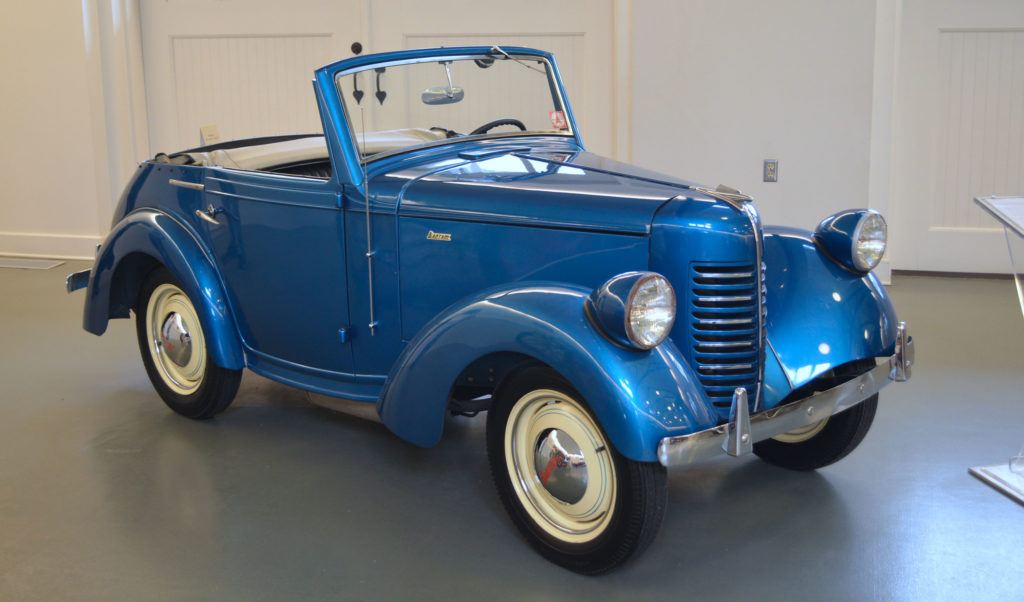
American Austin Car Company, Butler, PA. American Bantam Model 65 Convertible Coupe, 1940. Frick Art & Historical Center, 1999.1.14. Gift of G. Whitney Snyder.
During its heyday, 1890s-1940, the auto industry in Pittsburgh and the Western Pennsylvania region had roughly 50 automobile manufactures. The abundance of manufacturing resources, proximity to shipping lines, a skilled labor force, and a wealthy population that could afford the new machines led to industry success in the region. Although the bulk of automobile manufacturing moved to Detroit following WWII, Pittsburgh resources—steel, glass, paint, and aluminum—still played a major role in the production of automobiles. Where we live and work, how we travel, our landscape and environment have all been profoundly shaped by the car, and the car has been profoundly shaped by Pittsburgh steel.
About Kim Cady
Kim Cady has been the Assistant Curator of the Car and Carriage Museum at the Frick Pittsburgh for three years where she cares for and develops exhibitions related to the organization’s historic transportation collection. Kim has a BA in Liberal Studies from Mansfield University and a MA in Museum Studies from the University of Oklahoma. Prior to her work at the Frick, she served as the Collections Manager at the Pennsylvania State Police Museum in Hershey and the Assistant Curator at the Tioga Point Museum in Athens, PA.

 Pittsburgh and the Automobile Industry in the Early 20th Century
Pittsburgh and the Automobile Industry in the Early 20th Century